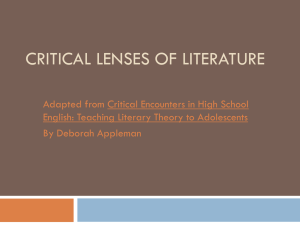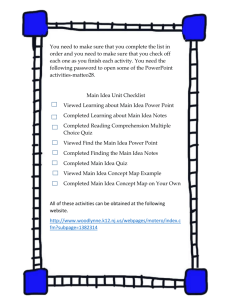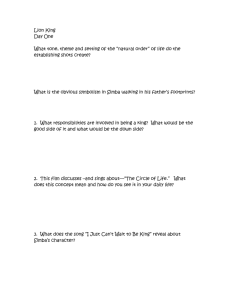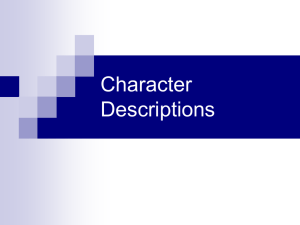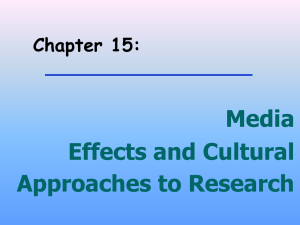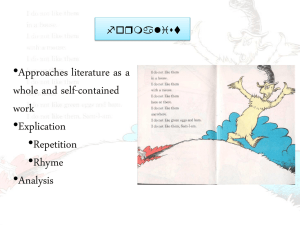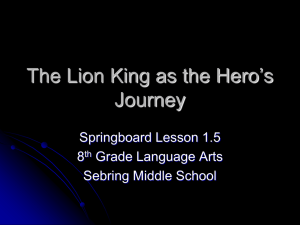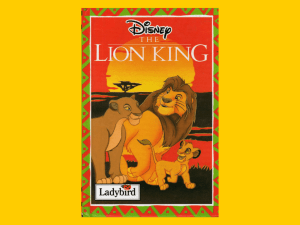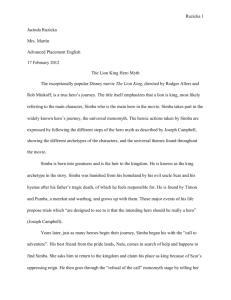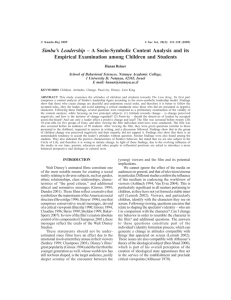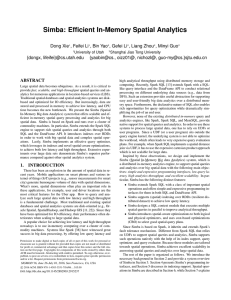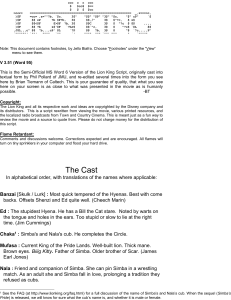Literary theory is an attempt to understand the various ways that
advertisement
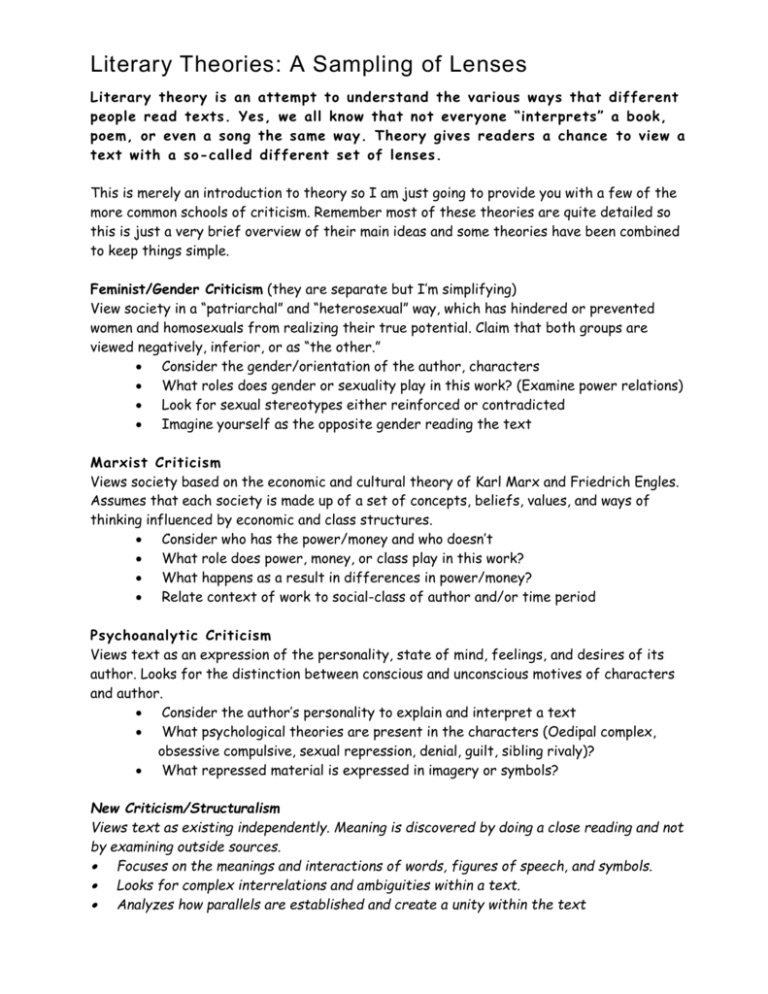
Literary Theories: A Sampling of Lenses Literary theory is an attempt to understand the various ways that different people read texts. Yes, we all know that not everyone “interprets” a book, poem, or even a song the same way. Theory gives readers a chance to view a text with a so-called different set of lenses. This is merely an introduction to theory so I am just going to provide you with a few of the more common schools of criticism. Remember most of these theories are quite detailed so this is just a very brief overview of their main ideas and some theories have been combined to keep things simple. Feminist/Gender Criticism (they are separate but I’m simplifying) View society in a “patriarchal” and “heterosexual” way, which has hindered or prevented women and homosexuals from realizing their true potential. Claim that both groups are viewed negatively, inferior, or as “the other.” Consider the gender/orientation of the author, characters What roles does gender or sexuality play in this work? (Examine power relations) Look for sexual stereotypes either reinforced or contradicted Imagine yourself as the opposite gender reading the text Marxist Criticism Views society based on the economic and cultural theory of Karl Marx and Friedrich Engles. Assumes that each society is made up of a set of concepts, beliefs, values, and ways of thinking influenced by economic and class structures. Consider who has the power/money and who doesn’t What role does power, money, or class play in this work? What happens as a result in differences in power/money? Relate context of work to social-class of author and/or time period Psychoanalytic Criticism Views text as an expression of the personality, state of mind, feelings, and desires of its author. Looks for the distinction between conscious and unconscious motives of characters and author. Consider the author’s personality to explain and interpret a text What psychological theories are present in the characters (Oedipal complex, obsessive compulsive, sexual repression, denial, guilt, sibling rivaly)? What repressed material is expressed in imagery or symbols? New Criticism/Structuralism Views text as existing independently. Meaning is discovered by doing a close reading and not by examining outside sources. Focuses on the meanings and interactions of words, figures of speech, and symbols. Looks for complex interrelations and ambiguities within a text. Analyzes how parallels are established and create a unity within the text Archetypal: A form of Structuralism that focuses on the structure of stories. Identifies 31 actions that a story can contain and claims all stories pick from this list—the unified story. Also focuses on the specific character types that are repeated within all stories— hero, villain, trickster, orphan, mentor etc. Deconstruction/Post-Structuralism (definitely the most confusing one) Created by some very intelligent or very disturbed people who view literature as having no meaning because language has no meaning. Basically, you can never really know what the “meaning” of a story is because words are so abstract. Historical Criticism/Post-Colonial Views text as a closely related to the time during which an author wrote. Focused on the social, political, economic, cultural, and/or intellectual climate of the time. Examines how other cultures are viewed in terms of an overpowering Western literature base. Looks at issues of colonization and imperialism Rejects the idea of marginalized people as “others” Celebrates “hybridity” (existing in two cultures at once) Modernism/Post-Modernism: Modernism is a rejection of traditional forms of literature (chronological plots, continuous narratives, closed endings etc.) in favor of experimental forms. They have a nostalgia for the past that they feel is lost so Modernist texts often include multiple allusions. PostModernists follow the same principles but celebrate the new forms of fragmentation rather than lamenting them. Look for ironies within a text Analyze fragmentation and a mixing of genres and forms Blurs the line between “high” literature (classics) and popular literature (NY Times Bestsellers) ----------------------------------------------------------------------------------------------------Okay, now that I’ve thoroughly confused you let’s try it and you’ll see it’s actually kind of fun. Let’s analyze The Lion King a.k.a. Hamlet with a few of these theories. (Please don’t start singing) Feminist/Gender: Can be viewed as the helpless role females have in society. The female lions are used to provide food and care for the young yet it is the males that have all the power. When Mufasa dies his power transfers to either his son or his brother. His wife is never even considered. Nala is also clearly “stronger” than Simba yet she is considered inferior. Marxist: Can be viewed as the upper class (lions) trying to maintain power over an unhappy lower class (hyenas). The lower class resents the privileges of better food and hunting grounds that the upper class maintains. This conflict causes a rebellion, which disrupts the normal social order causing chaos and destruction. Psychoanalytic: Can be viewed as a classic case of sibling rivalry—Scar is savagely jealous of his much stronger and might I say better looking older brother. Can also be viewed as the classic struggle to overcome feelings of guilt or inadequacy—both of which Simba has after the death of his father. Archetypal: Simba represents the classic hero quest. Simba suffers from a loss of a father figure and must go off on a journey to grow into his destiny. During his journey he meets tricksters (Timon/Pumba) who also act as his helpers and finds a mentor (crazy monkey with a stick). Nala also acts as the herald as she upsets the sleepy equilibrium in which the Simba has lived and starts his growth. He then has enough strength (mental and physical) to overcome the villain and restore everything to order. Assignment: For your independent novel, write four paragraphs using 4 different critical lenses (1 type for each paragraph) and examine HOW the novel can be viewed through the lens. Include at least 2 quotes/specific pieces of evidence in each paragraph to support the analysis.
